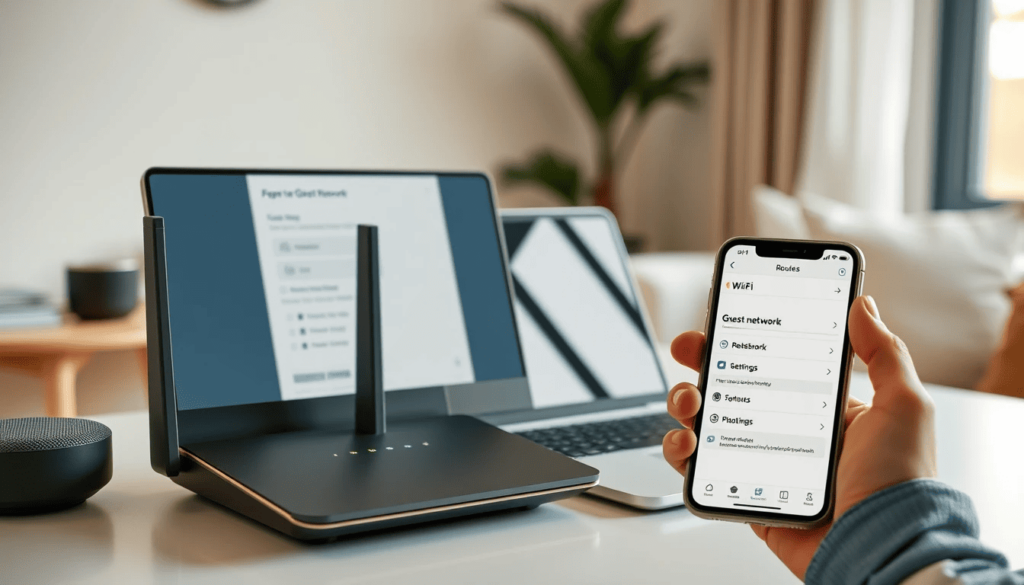Error setting up guest Wi-Fi network on 192.168.0.1 and 192.168.1.1

Setting up a guest Wi-Fi network can sometimes lead to issues, particularly for users accessing their router settings through 192.168.0.1 or 192.168.1.1. Common problems include lack of internet access and misconfigurations. In this article, we will explore troubleshooting tips, common misconfigurations, and how to access your router settings effectively.
- How to troubleshoot internet access issues on guest Wi-Fi?
- What are the common misconfigurations on 192.168.0.1?
- How to access the router login page for 192.168.0.1?
- Why is my router assigning the wrong IP address?
- How to change the Wi-Fi password using 192.168.0.1?
- What to do if you can’t access 192.168.1.1?
How to troubleshoot internet access issues on guest Wi-Fi?
One of the first steps in resolving issues related to the error setting up guest Wi-Fi network on 192.168.0.1 and 192.168.1.1 is to check the basic network settings. Make sure that the guest network is enabled in the router's administrative settings.
Additionally, confirm that the DHCP server is active. If it is not, devices connected to the guest network may not receive an IP address, leading to connectivity problems. You can also try rebooting the router, which can often resolve temporary glitches.
- Check if the guest network is enabled.
- Ensure DHCP is active for automatic IP assignment.
- Reboot the router to clear any temporary issues.
- Verify if connected devices can obtain an IP address.
If these steps do not resolve the problem, consider checking any firewall rules that may block guest access. Sometimes, security policies can inadvertently prevent internet access, which can complicate the troubleshooting guest Wi-Fi connection issues.
What are the common misconfigurations on 192.168.0.1?
Users often encounter misconfigurations when setting up their networks. One common issue is assigning the wrong subnet to the router, such as using 192.168.0.0/24 instead of the appropriate 192.168.0.1/24. This could lead to devices being unable to communicate effectively with the router.
Another frequent mistake is not setting the correct firewall rules. For guest networks, it's crucial to ensure that these rules allow access to specific services without compromising the main network's security. Double-checking these configurations can help prevent connectivity issues.
- Incorrect subnet assignment (e.g., 192.168.0.0/24 instead of 192.168.0.1/24).
- Improper firewall rules that block necessary traffic.
- Misconfigured access controls for guest users.
To avoid these issues, always review the router settings after making changes. Ensuring correct configurations will help in preventing the error setting up guest Wi-Fi network on 192.168.0.1 and 192.168.1.1.
How to access the router login page for 192.168.0.1?
Accessing the router's login page is straightforward. Begin by entering 192.168.0.1 in your web browser's address bar. You will be prompted for a username and password, which are typically set to "admin" for both fields by default.
If you have changed the credentials and cannot recall them, you may need to perform a factory reset on your router. This will reset all settings, including the login information, to their defaults.
- Open a web browser and enter 192.168.0.1.
- Input the default username and password (usually "admin").
- Reset the router if you can't access the settings due to forgotten credentials.
Once you successfully log in, navigate to the guest network settings to check for any misconfigurations that could be causing issues.
Why is my router assigning the wrong IP address?
Incorrect IP address assignments often stem from DHCP settings misconfigurations. If the DHCP server is set to a range that overlaps with static IPs, routers may assign the wrong addresses. This could lead to devices being unable to connect properly.
Improper device configurations can also play a role. If a device has a static IP address set incorrectly, it may not communicate with the router effectively, which is a common symptom of the error setting up guest Wi-Fi network on 192.168.0.1 and 192.168.1.1.
- Check DHCP range and ensure it does not overlap with static IPs.
- Review device network settings to ensure they are configured correctly.
- Consider resetting the DHCP lease on the router.
Make sure to monitor your network regularly for device connectivity issues, as well as any unauthorized access attempts.
How to change the Wi-Fi password using 192.168.0.1?
Changing your Wi-Fi password is an important security measure. To do this, access the router login page by entering 192.168.0.1 in your web browser. Once logged in, navigate to the wireless settings.
In the wireless settings section, look for the option to change the Wi-Fi password. Type in the new password, ensuring it is strong and secure, and save the changes. Remember, a strong password typically includes a mix of upper and lowercase letters, numbers, and symbols.
- Login to 192.168.0.1.
- Go to wireless settings.
- Update the Wi-Fi password and save changes.
After changing the password, ensure that all devices reconnect with the updated credentials to avoid connection issues.
What to do if you can’t access 192.168.1.1?
In the event that you are unable to access 192.168.1.1, there are several troubleshooting steps you can take. First, check your network connection to ensure you are connected to the router. If you are using Wi-Fi, try connecting via an Ethernet cable to eliminate any wireless issues.
Next, verify that you are entering the correct IP address. Sometimes, users mistakenly enter an incorrect address, which leads to access issues. If necessary, consult your router’s manual for the correct IP address.
- Ensure you are connected to the router directly via Ethernet or Wi-Fi.
- Double-check the IP address you are using.
- Consider rebooting the router if access issues persist.
If you have tried these steps and still cannot access the router, consider performing a factory reset as a last resort. This will restore factory settings, allowing you to set up the router once again.

Deja una respuesta